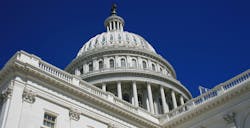In June 2013, the U.S. Supreme Court issued its landmark decision in the Myriad case (Ass’n for Molecular Pathology v. Myriad Genetics), holding that naturally occurring DNA segments are products of nature and not patent eligible merely because they have been “isolated.” In contrast, the Court held that certain types of synthetic DNA—referred to as cDNA—are patent eligible if distinguishable from natural DNA. Notably, the Court left several questions unanswered by remaining silent on patent eligibility of many commercially relevant forms of synthetic DNA, and not addressing the issue of “isolated” molecules more broadly beyond DNA.
Immediately after the Myriad decision, several companies, including Ambry Genetics, began offering diagnostic analysis services in competition with Myriad’s BRCA gene mutation test. Myriad responded by filing infringement suits seeking preliminary injunctive relief to stop Ambry and the others from offering BRCA testing, asserting claims that had not been addressed in the Supreme Court decision and that were relevant to the BRCA test.
Ambry litigation
In March 2014, the U.S. District Court for the District of Utah held that Myriad should not be entitled to a preliminary injunction in the Ambry case. (The case involved product claims to pairs of primers that were useful for amplifying nucleic acids having BRCA1 nucleotide sequences by polymerase chain reaction [PCR], as well as claims drawn to methods for screening germline BRCA mutations.)
Although the district court agreed that Myriad would suffer irreparable harm due to Ambry’s test, it did not agree that Myriad had demonstrated a reasonable likelihood of success on the merits of the case, and public interest considerations could not sway its decision one way or the other.
The district court concluded that Ambry had raised a legitimate question of whether the Myriad primer and method(s) claims were invalid. With regard to the primer claims, the district court took the position that, while the primers may be useful working in pairs, the fact that Myriad claims two primers together does not alter the fact that they remain patent-ineligible products of nature. In support, the district court stated that performing PCR with such primers exploits a natural DNA function to a useful end, and this functionality is not enough to render the primer pairs markedly different from that of naturally occurring DNA.
With regard to the method claims, the district court stated that, aside from the naturally occurring nucleotide sequence of the BRCA genes, the remaining steps set forth in the method claims are conventional activities well understood and uniformly employed by those working with DNA at the time Myriad applied for its patents.
Myriad appealed this decision to the U.S. Court of Appeals for the Federal Circuit (Federal Circuit). On December 17, 2014, the Federal Circuit affirmed the district court’s decision. The Federal Circuit held both that primers are not patent eligible because they do not have a unique structure different from anything found in nature, and also that the method claims are not patent eligible because they include merely routine and conventional steps for carrying out a germline mutation screen.
Outlook
While the Ambry case was making its way through the courts, the U.S. Patent and Trademark Office (USPTO) issued initial guidance aimed at assisting its examiners in determining whether a claim reflects a significant difference from what exists in nature. The guidance set forth a three-part test balancing multiple factors that weigh for or against patent eligibility. This initial USPTO guidance proved to be very controversial because it went beyond the scope of the Myriad decision. The test was to be applied to any patent claims involving a product of nature. Thereafter, many biotechnology-related patent applications began facing patent eligibility rejections, including applications that had already been found novel and non-obvious over the prior art.
Based on extensive public feedback, the USPTO issued revised guidance doing away with the multi-factor balancing test and directing examiners to analyze claims that are specifically directed to a judicial exception (applying the two-step test set forth by the Supreme Court in Alice Corp. v. CLS Bank International) rather than claims merely involving a judicial exception. Thus, the updated USPTO guidance appears to expand the scope of subject matter that would be found eligible. However, this updated guidance is consistent with the Ambry decision (which was issued just one day after the revised guidance), and significant questions remain as to what is patent eligible in the field of diagnostics related to nucleic acid analysis.
Takeaways
Stakeholders shouldn’t conclude that nothing is patent eligible in the diagnostic space. Despite all the case law, one issue that hasn’t been directly addressed is the extent to which the scope of the claims is the underlying issue. In Myriad, the claims at issue were written so broadly that the patent challengers had plenty of room to make reasonable arguments against eligibility. Even the Federal Circuit seemed to suggest in the Ambry case that Myriad’s claims directed to the 10 specific mutations that it discovered may be patent eligible.
As patent practitioners respond to the case law and guidance, there will likely be ways to draft claims with meaningful limitations that are patent eligible and that provide commercially valuable patent protection in the diagnostic space.

